This is our second consecutive year here, something we've never done at another location. Why? The best host site ever, a great location, and an interesting job working for an amazing volunteer coordinator. But first, the park:
A park this size requires a large staff and there are lots of folks involved. Besides a ranger, maintenance, and administrative staff, the park has over 50 resident summer volunteers. there are camp hosts in each campground, museum hosts, kiosk hosts, special project and maintenance hosts, hosts for the disk golf courses, and more. Unlike other parks we've been at, many volunteers return year after year - one couple has returned this year for the 18th year! The big benefit from having all these people is of course the potlucks! We typically have four tables of food plus two more for desserts!
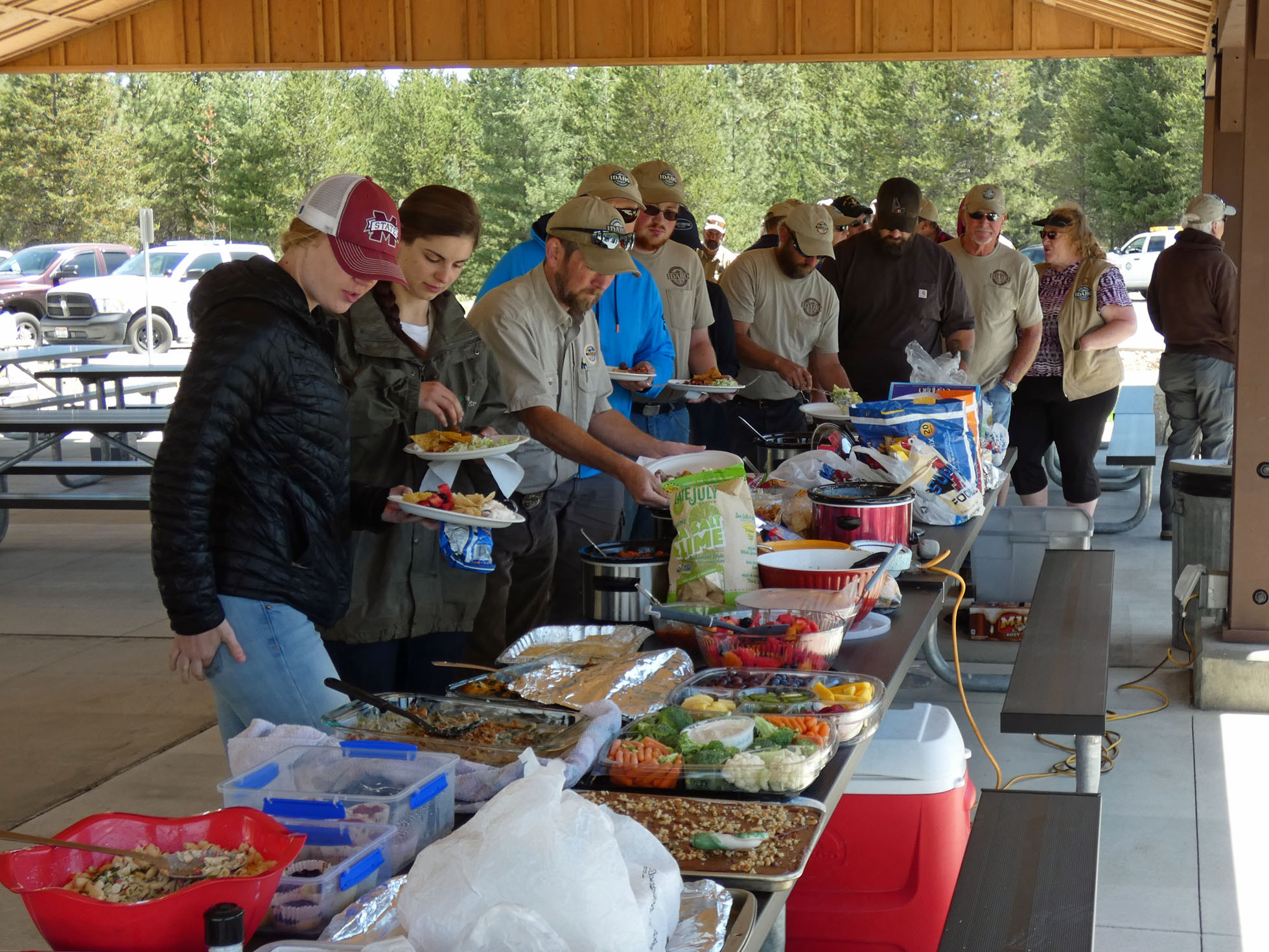
Our job is to develop and put on the week evening programs and hold a Junior Ranger class on Saturday. We decide what our subjects will be, develop and print the program flyers, and post them at 17 locations throughout the park. On program nights we set up our equipment at the amphitheater and provide visitors with a mixture of interactive activities and nature and historical videos; everything from "Bill Nye the Science Guy" to teaching the principals of "Leave No Trace". We truly enjoy meeting families from all over the country and entertaining them and especially their children.
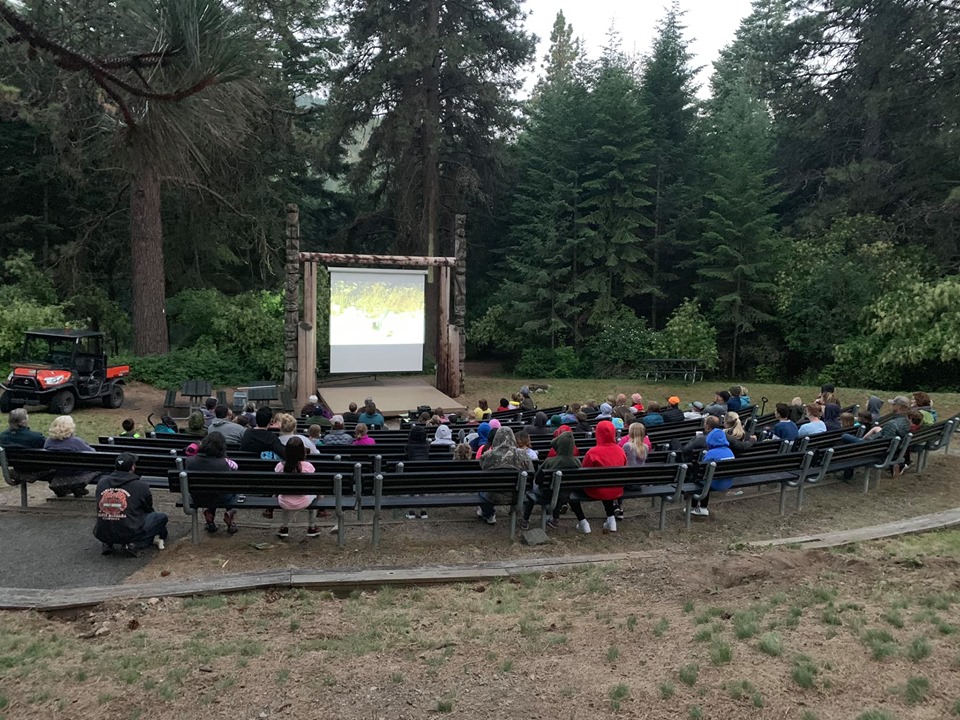
On Saturday we have a 3 hour class for junior Rangers at the museum, where kids can "feel" the furs of Northern Idaho predators and make a craft, usually corresponding to the night's movie. One Saturday we made "Moose" hats for over 60 children - the kids looked so cute!

We enjoy Monday mornings when we print and distribute our program flyers. It gives us the opportunity to cruise the park and chat with the hosts. We check out a truck from the shop, stop at the visitor center to print flyers for the counter display, host distribution and kiosks, then hit the road, visiting the park facilities and campgrounds.
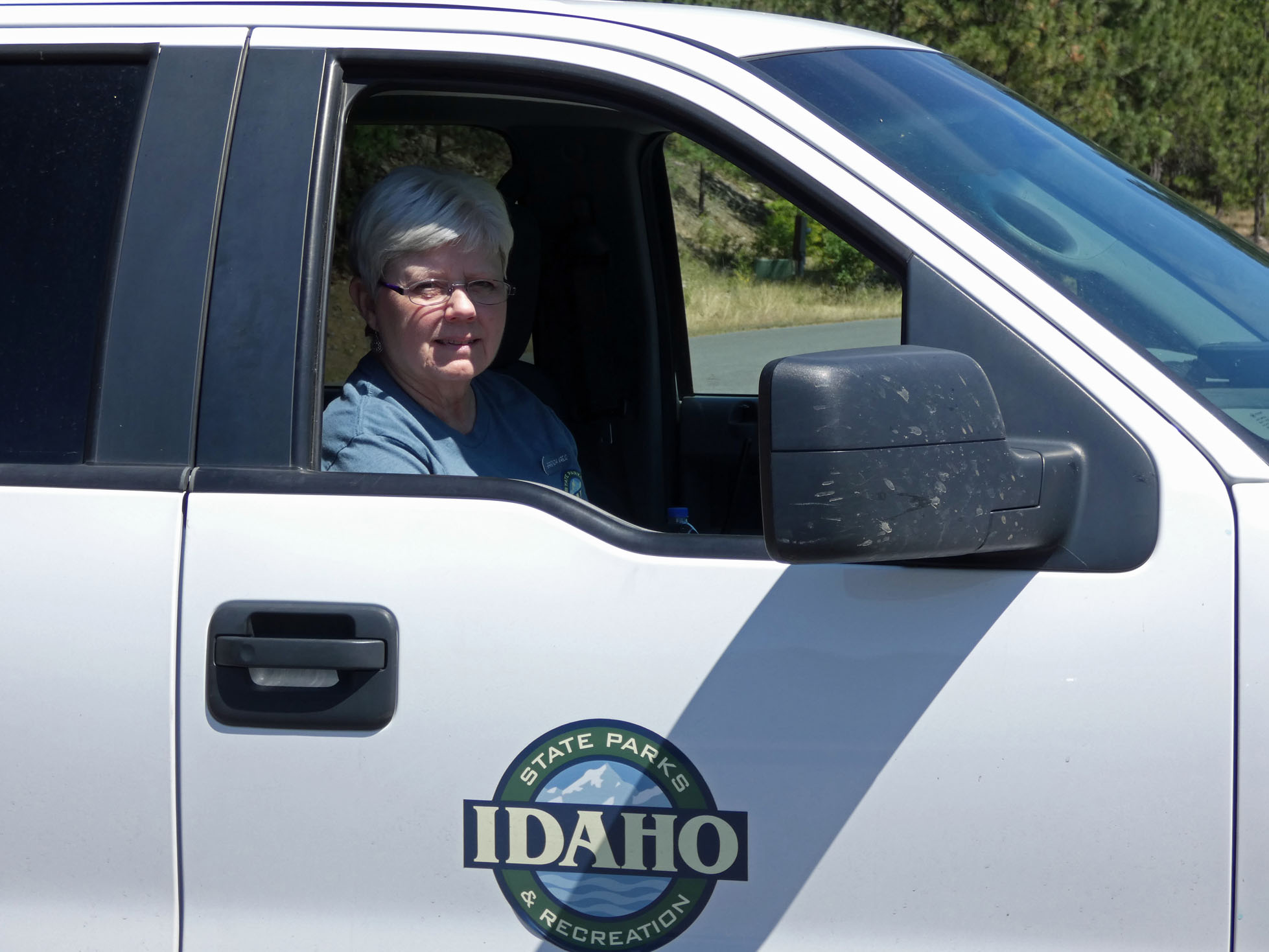
We start at the main entrance where the "camps full" sign has been up since mid-June. Prior to the visitor center, there's a welcome kiosk where the hosts welcome visitors, issue day use passes, and direct RVs to parking for registration.
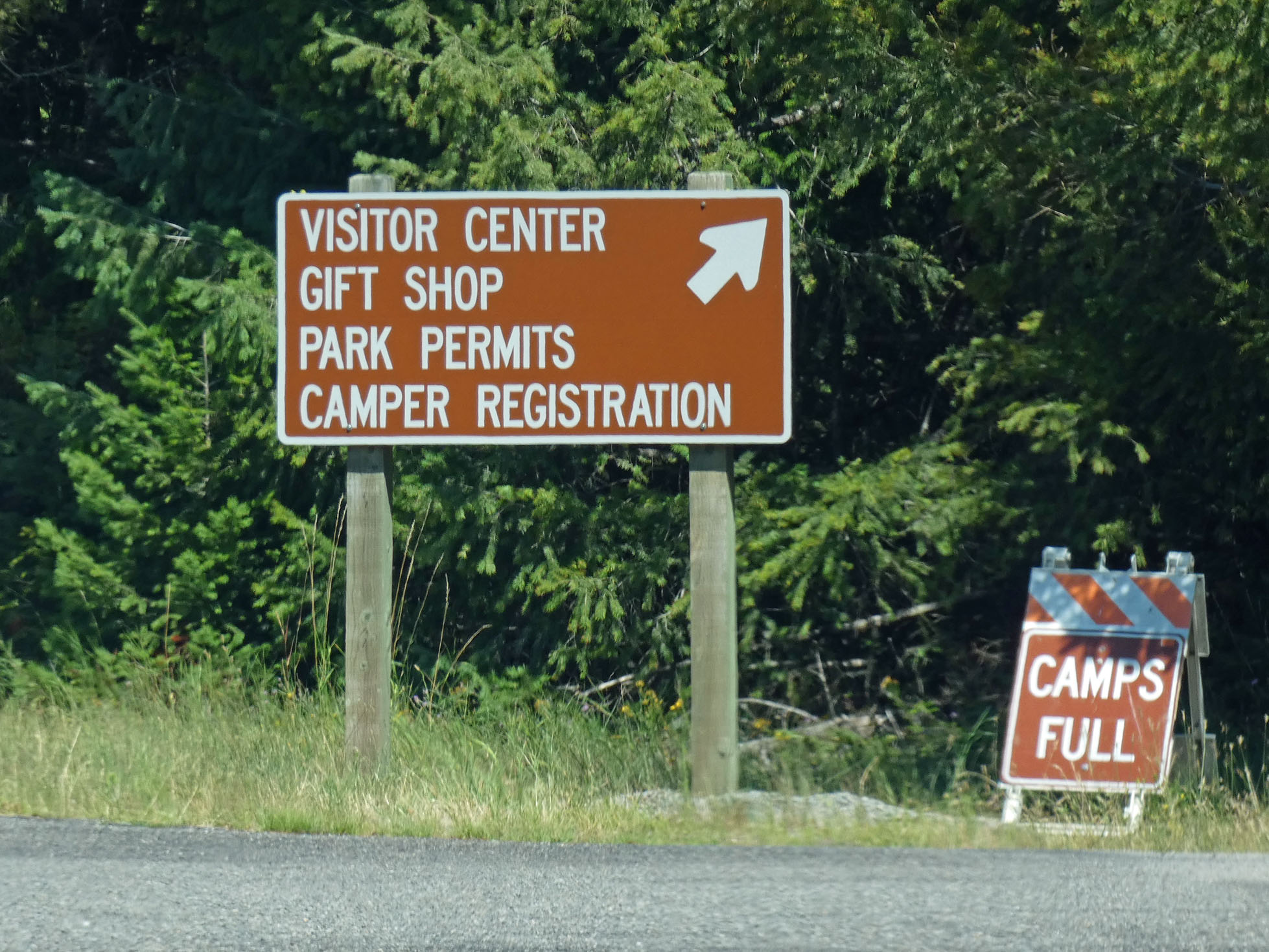
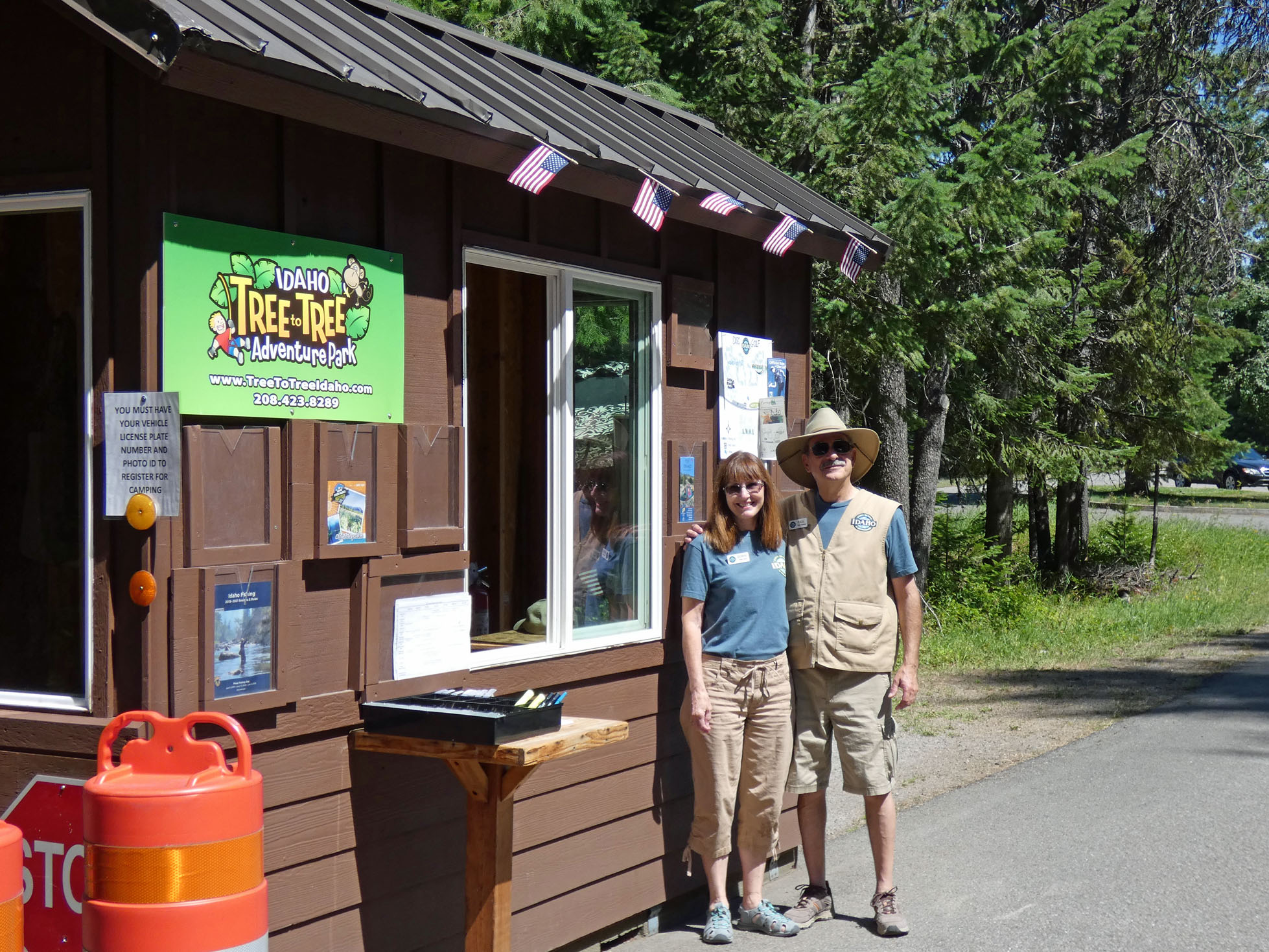
This year the park expanded one of the loops with 30 full-hookup sites and created a berm along the road to shield the sites. Wildflowers were planted and quickly bloomed into a dazzling display of color.

We drop off flyers at the Brig Museum, one of the only remaining buildings of the 776 that were built here during WWII. The museum is housed in two of the four cell blocks, and has a number of interesting exhibits. On one wall is the sign-in book for any of the over 290,000 recruits that trained here. It's sad to look at the books and see how each year the signatures are fewer than the year before. The park once held an annual reunion, but the number of WWII vets has dwindled to the point that it's no longer feasible.
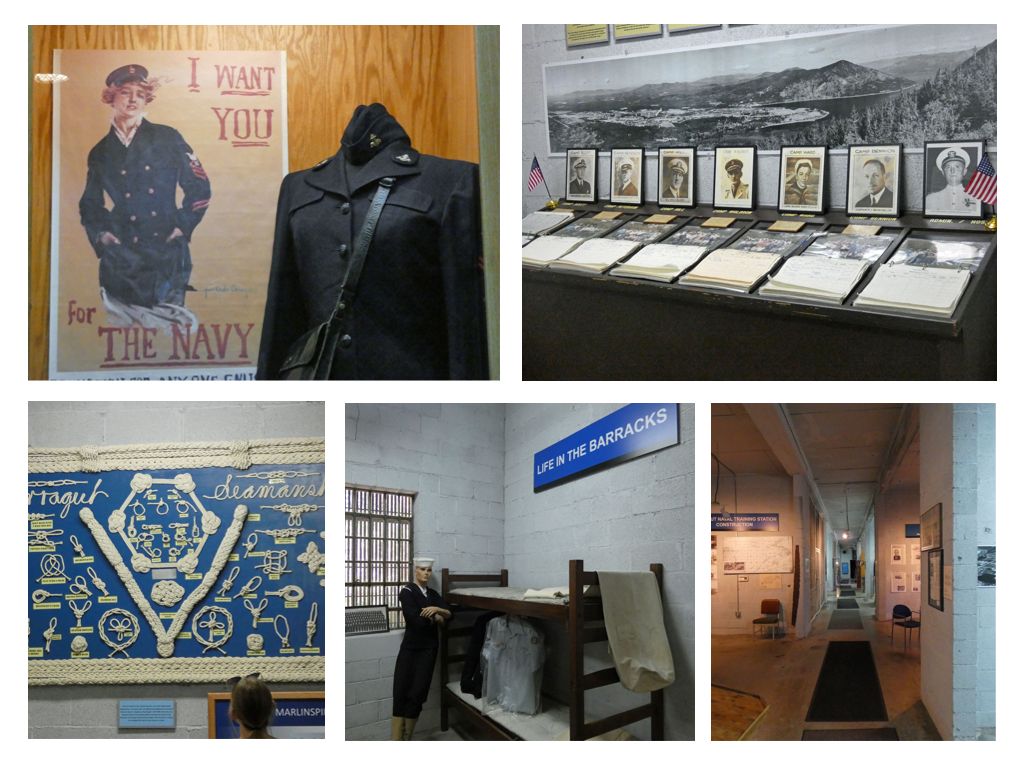
It's always interesting when driving through the campgrounds to see what type of RVs or tents are being used. The park has four campgrounds and they're all different. Whitetail, the oldest, is a no-hookup campground in the woods. Snowberry, the next oldest has 30A electric and water. Waldren is newer with paved sites and 50A and water and has four loops. Gilmour, the newest, has loops of both 50A and water and full-hookup sites. The one thing all of the sites have in common is space - all of the sites are widely separated and have some shade; an uncommon benefit in an age where spaces are crammed together to make more money.

The camp host sites are all large and full-hookup. One of the features of this park is that everyone, including camp host, rangers, and visitor center, have a radio. Any problems or complaints with campers are quickly radioed in and handled by one of the on-patrol rangers, who are on duty late into the night.
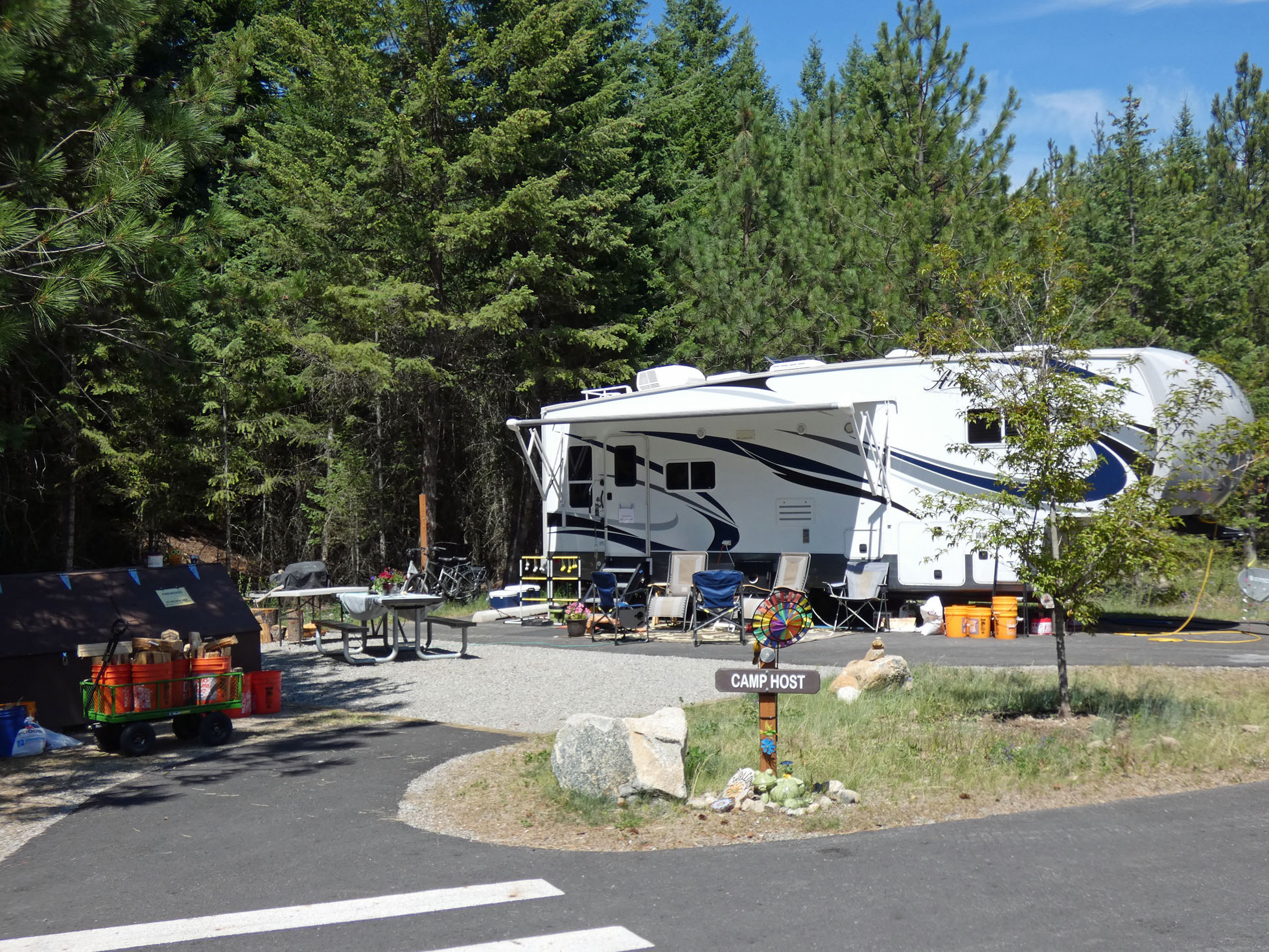
One of the most popular places in the the park during the summer is Beaver Bay Beach. Years ago, the park sculpted a small bay out of the lake and covered it with sand. Since it's shallow the water temperature warms us; on the lake side of the beach the water is 800' deep and cold! There's a nice bathhouse and parking for 160 vehicles - which is often full.
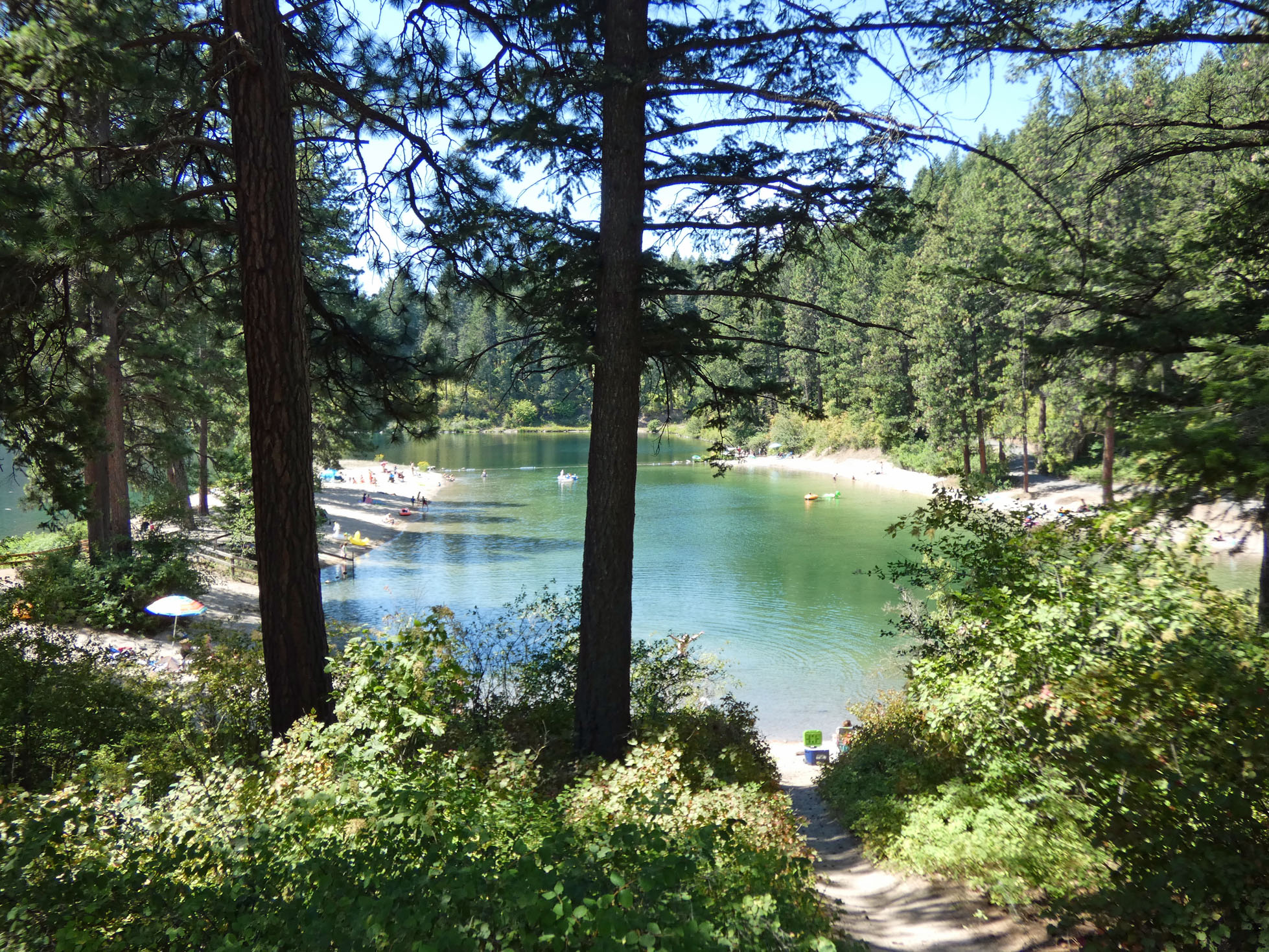
Driving around the park gives us a chance to view some of the wildlife that lives here. There are numerous deer, flocks of wild turkey, badger, coyote, and bobcat. With over 4000 acres, much of it wildlife management area, it wouldn't be a surprise to see a black bear or mountain lion, and we even had a few moose sightings earlier this year. On a recent drive, we came across this coyote pup - such a beautiful animal!
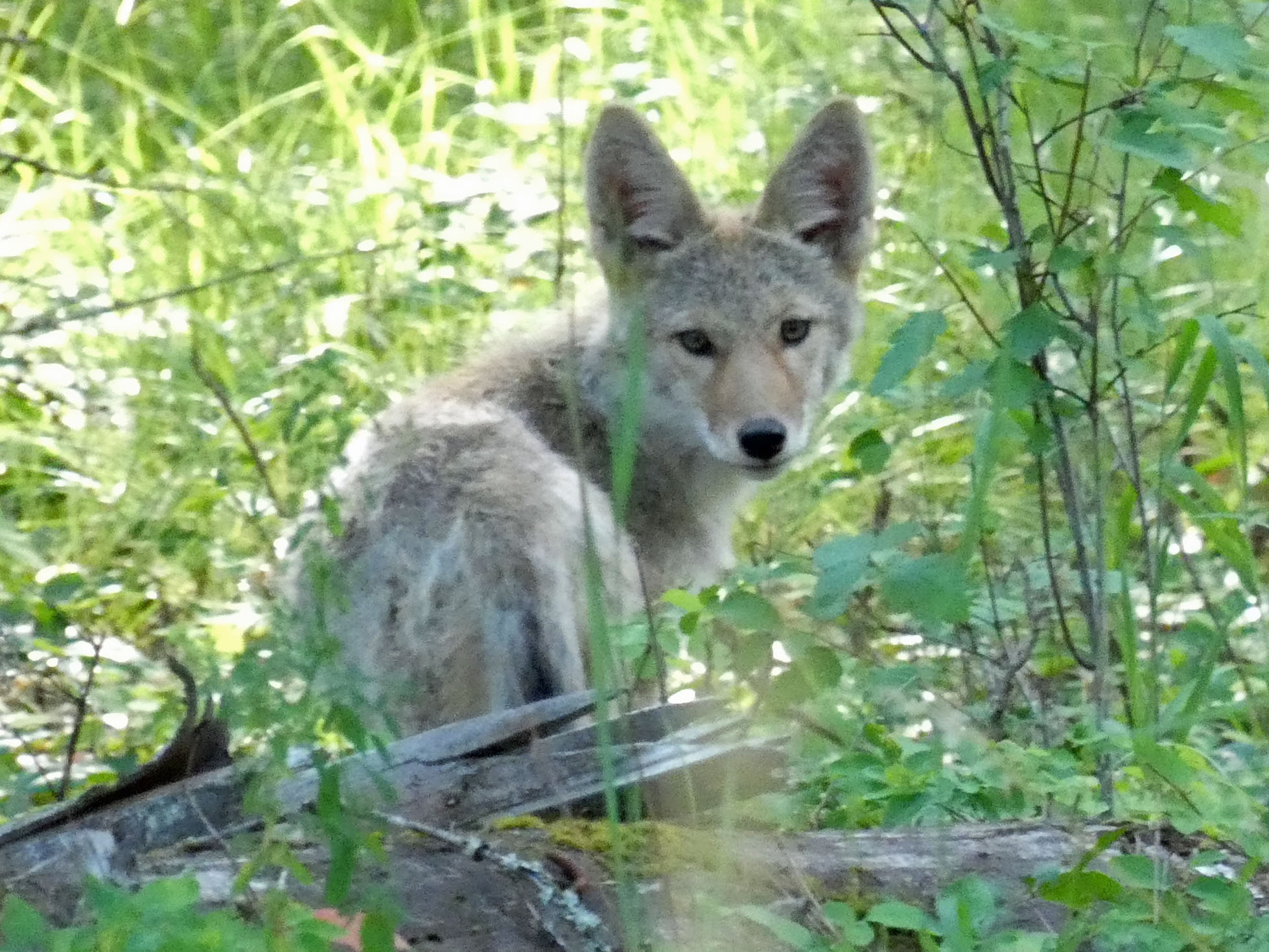
We'll be here until mid-September, which gives us the chance to organize and prepare our programs for next year. After that, we're planning on slow travel through Montana, Idaho's Sawtooth Valley, and up into Eastern Oregon. So check back with us, and we're looking forward to new territory and....new restaurants!